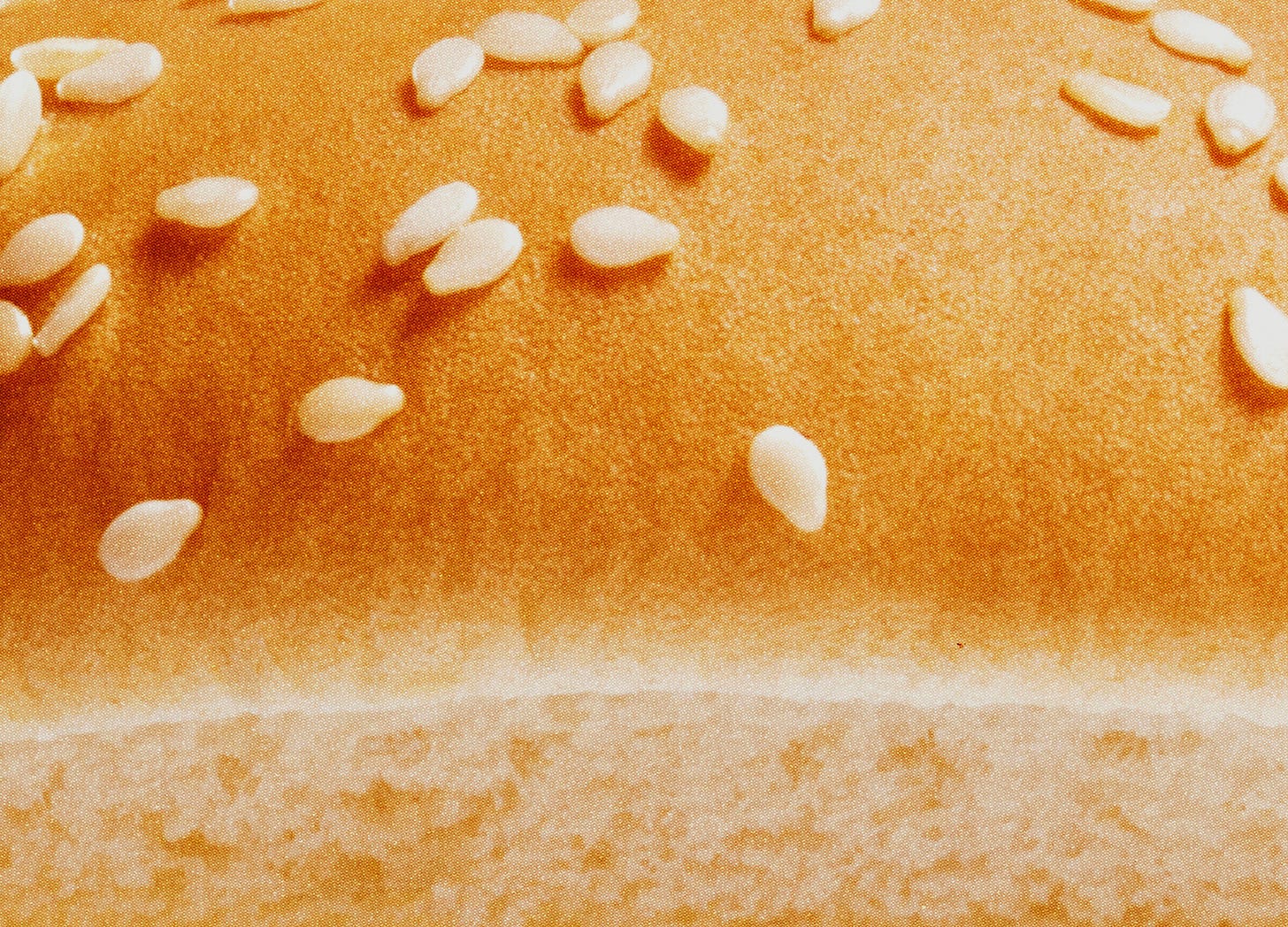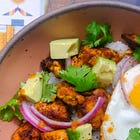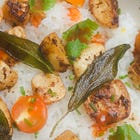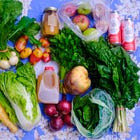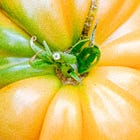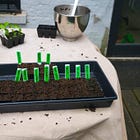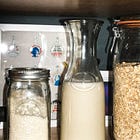This newsletter will be too long to read in your email app; please click through to read it in its entirety.
Ultra-processed foods are in the zeitgeist. Perhaps you’ve read Ultra-Processed People: The Science Behind Food That Isn’t Food by Chris Van Tulken or the many articles inspired by its publication.
If you’re an American, you’ve likely eaten ultra-processed food (UPF) today and almost certainly in the last week. It’s virtually impossible not to—UPF is cheap, convenient, arguably addictive, and deeply nostalgic.
Not to be confused with processed foods (like pasta or cheese), ultra-processed foods are edible products made with additives like artificial colors, stabilizers, and preservatives and added sugar and fat to make them hyper-palatable. It’s not a perfect standard, but Van Tulken defines UPF as food made with ingredients not found in a home kitchen that are packaged in plastic.
UPF is not just TV dinners, fast food, and soda—it’s also, often, what we assume is the healthier choice, food like granola bars, fruit gummies, plant-based meat, tortillas, coffee creamers, and store-bought bread.
Evidence is mounting that UPF is detrimental to human health, not to mention climate change. UPF encapsulates so much of the food system’s disastrous impact on the climate—single-use plastics (made with fossil fuels), synthetic fertilizers (made with fossil fuels), monoculture crops, factory farming, and pesticides, to name just a few.
Where do you start if you want to reduce these foods in your life and your kitchen?
UPF is ubiquitous, as you may notice when glancing at the list of ingredients in everyday products in your home. Its cost and convenience are valid reasons to believe it’s the only way to eat or cook. As I wrote in August, we all have different circumstances and choices that impact how we eat, and there is no one right way to do it.
It is not all or nothing. Start with certain items, and once they feel like a regular part of your life and kitchen—move on to the next thing.
I suggest learning what you can buy. As you’ll discover, eating this way means cooking from scratch much more. If you can buy bread, granola, or other prepared foods with whole-food ingredients, do so! That way, you will have more energy for the things you make from scratch.
There are also some foods that I want to eat, but making them from scratch is impractical. I’m not worried about packaged tortilla chips, for instance, or potato chips if the ingredients are potatoes, seed oil, and salt. On that note, occasional seed oils are not a concern for me, though I think switching to cooking with healthy oils like olive or avocado is a good idea. I occasionally eat UPF; it’s not going to kill me, though if I overdo it, I pay with indigestion and sluggishness. Balance is sustainable.
I want to say, too, that this list is not a checklist. It’s a bunch of ideas—ones specific to my diet and culture, at that.
(I tried to craft this list in a positive, additive way, but if you struggle with disordered or restrictive eating, you may want to skip it 💚).
68 ways to eat fewer ultra-processed foods
1. Make popcorn on the stove.
Cover the bottom of a heavy pot with oil and heat to medium. Once hot, pour in one to three tablespoons of popcorn kernels and put on the lid. Remove the pot from the heat when the pops slow to two or three seconds. Pour melted butter, nutritional yeast, ground cumin, or Stardust Dipping powder for flavor.
2. Buy organic sourdough bread from a local bakery.
Having a local bakery is one of life’s greatest joys. The good bakeries will bake with sourdough starter and organic flour. Farmers' markets usually have a bread stand, too.
If you buy sourdough bread from the grocery store, look at the ingredient list; the only ingredients should be flour, water, starter, and salt.
The recommended way to store fresh bread is in a paper bag inside a cloth bag at room temperature. I’ll be honest: I slice and store it in a reused plastic bag in the fridge, and it keeps without molding for up to two weeks. (Stored in a plastic bag at room temperature, it will mold).
3. Make bread using organic flour.
Sourdough is great, but homemade yeast bread made with organic flour is worlds better than store-bought bread. I like SAF instant yeast and highly recommend Erin Jean McDowell’s book Savory Baking. You can also use a bread machine to make bread-making more convenient.
Organic flour is worth the extra cost; glyphosate is nasty stuff. I like King Arthur and find it most economical through Thrive Market.
I make a loaf of artisan sourdough every week following this very flexible and easy recipe from Farmhouse on Boone (which I half).
4. Turn the sourdough bread ends into bread crumbs or croutons.
Recipe here:
5. Make and freeze bread products—like buns, focaccia, and muffins.
Most bread can be sliced, frozen, and toasted directly from the freezer. I like to do this with focaccia for sandwiches and buns for bean burgers.
6. Get advanced and mill flour at home.
The flour sold in the store has had its bran and germ removed and its endosperm treated. This processing makes flour shelf-stable but strips wheat of its many vital nutrients. Stone-milled wheat keeps all these parts intact but must be used quickly before it spoils (wheat berries can be stored for many years).
Baking with this flour requires a learning curve and must be sifted to behave like the all-purpose flour you’re used to. This guide from The Perfect Loaf is great for learning more about countertop mills and baking with fresh flour.
7. Replace UPF crackers with crostini.
Thinly slice a day-old baguette, drizzle with olive oil and salt, and toast at 350F for 10 to 20 minutes until the bread is no longer pliable. Once cool, these can be kept for up to one week in an airtight container at room temperature and dipped into hummus or served with cheese.
8. Baguettes can be frozen whole and revived in the oven.
To revive a frozen baguette, rinse it under faucet water and bake it at 400F for 5 to 10 minutes.
9. Make sourdough-discard crackers.
My recipe is coming 🔜.
10. Make pizza dough.
I like King Arthur’s recipe. Make an extra disc and freeze it for later. The frozen dough can be thawed in the fridge overnight.
11. Make cakes and sweets at home.
12. Replace granulated sugar with honey or maple syrup.
13. Get good at your freezer.
Freezing ginger, granulated yeast, nuts, and seeds can extend their shelf life. You can also use your freezer to blanch and preserve fresh products.
For ways to turn your freezer into a pantry, I like Crystal Schmidt's book Freeze Fresh: The Ultimate Guide to Preserving 55 Fruits and Vegetables for Maximum Flavor and Versatility.
14. Make freezer meals the lazy way.
You can do big-batch freezer meal cooking days, but you can also double the recipes you love and freeze the extra for a meal in the future. This is perfect for soups.
If you store soups in glass, use a wide-mouth jar and leave an extra inch of space (“headspace”) at the top to avoid cracking in the freezer.
15. Build a staples pantry with quick-to-prepare items like rice, lentils, quinoa, rolled oats, and dried pasta.
A shelf-stable pantry will allow you to assemble a meal quickly. You can also freeze proteins like cooked beans, tofu, and tempeh.
16. Discover your go-to lazy pantry dinner.
Every home cook needs a pantry meal they can make with little fanfare and a huge payoff. Mine is Tofu Rice Bowl:
17. Join a CSA.
A CSA is community-supported agriculture—essentially, a local farm (or group of farms) puts together a weekly produce box. You typically pay in one lump sum months ahead, though some have payment plans. Some CSAs even offer front-door deliveries.
I love our CSA because it takes the decision-making out of grocery shopping and is more affordable than a la carte at a farmer’s market. Many CSAs also offer add-ons for products like eggs, bread, meat, and cheeses.
You will automatically begin to eat seasonally. I can’t say enough good things about joining a CSA.
18. Experiencing new-to-you fruits and vegetables in the CSA?
Get inspired with my CSA diaries:
19. Grocery shop beyond the grocery store.
If a CSA isn’t an option, look into your local farmers' market or zero-waste store for high-quality fresh ingredients. Online stores like Azure Standard and Thrive Market can fill the gaps for affordable bulk pantry items.
20. Start a garden.
Gardens can be big or small—even something as small as an herb garden will transform your life.
My guides to urban gardening are here:
21. Buy single-origin spices.
Spices aren’t ultra-processed, but their manufacturing can sometimes introduce toxic substances, such as the heavy metals found in cinnamon sold in the United States. Single-origin spices are of higher quality and essential to a whole-food pantry.
My spice favorites:
22. Sweeten store-bought yogurt with fresh fruit and honey.
Look for yogurt where the only ingredients are milk and active, live cultures. Avoid sweeteners and thickeners like pectin.
23. Make yogurt.
It is easy, I promise:
24. Use yogurt whey as a “protein powder” and probiotic supplement for smoothies.
I typically keep mine in the fridge (it will last as long as your yogurt). You can also freeze it into cubes and add it to your smoothies.
25. Make plant-based yogurt.
If dairy isn’t your jam, you can make your plant-based yogurt.
26. Replace vegetable oils with olive or avocado oil.
27. Replace margarine/plant-based butter with local butter.
28. Cook beans from scratch.
Beans are a huge part of a sustainable, whole-food diet. You can make them in the Instant Pot or on the stove.
I have found that soaking beans in a large bowl of water overnight with a tablespoon or two of acid (like apple cider vinegar or yogurt whey) makes them markedly more digestible.
I cook the soaked beans in fresh water with a head of garlic cut in half, half an onion, a bay leaf, and a dried pepper. You can throw in whatever aromatics you have (kept whole or in half so you can easily fish out later), like fresh herbs, celery, or whole peppercorns. I usually make chickpeas in the Instant Pot because they take so long to cook.
I typically cook a pound at a time, keeping half the beans for fresh eating and freezing the other half.
29. Swap pre-gated cheese for freshly grated.
Pre-gated cheese comes coated in anticaking agents, affecting taste, texture, and meltability.
30. Make big batches of tomato sauce and freeze them.
Tomato sauce can be frozen in wide-mouth glass jars with at least an inch of headspace.
31. Keep roasted, salted nuts around for snacking.
32. Make hummus.
I love this method from Rainbow Plant Life.
33. Pack your lunch.
I try to pack lunches for the office as much as possible. My approach is to pack leftovers from dinner the night before. Food like soups, pasta, and rice bowls reheat easily in the office microwave.
I keep a small silverware set and a beautiful bowl at the office to make this process more enjoyable. If you have a shared fridge, keep condiments like hot sauce and Kewpie in it to liven up your meals.
34. Pack snacks for air or car travel.
Travel is where UPF most often enters my life. I like to pack focaccia (homemade or from a local bakery), baguette sandwiches, granola, fruit, and nuts for plane travel. I am always looking for plane food ideas if you have any!
35. Eat filling, high-protein breakfasts.
My go-to breakfasts are oatmeal with chia seeds and fruit, fried eggs on sourdough toast, yogurt with homemade granola, and scrambled egg tacos.
36. Replace low-fat milk with local, non-homogenized “cream-line” milk.
CSAs are an excellent source of local milk.
37. Replace ultra-processed store-bought tortillas with three-ingredient tortillas.
I love these tortillas from Caramelo, based in Kansas City. I buy a dozen or so of their avocado oil tortillas and freeze them. I thaw a bag one at a time and store it in the refrigerator.
38. Or—make tortillas.
I follow the tortilla recipe from Erin Jean McDowell’s Savory Baking.
39. Make granola.
Homemade granola can be stored in an airtight container at room temperature for up to one week.
40. Wash and cut up fruit for easy snacking.
41. Switch to less-processed hot sauces.
Vinegar-based hot sauces make this easy, as vinegar is a natural preservative. I also love Queen Majesty’s hot sauces.
42. Switch to less-processed ketchup.
Look for ketchup with only tomatoes, sugar, salt, and vinegar. I like Annie’s.
43. Make mayo with an immersion blender.
44. Make your own oat (or nut) milk.
My oat milk recipe:
45. Replace ultra-processed coffee creamers with local whole milk or half-and-half.
46. Replace sweetened and flavored coffee creamers with homemade simple syrups.
Like pumpkin spice or a vanilla simple syrup. Or—add a few cracked cardamom pods to your coffee beans before brewing.
47. Become a vegetarian.
Many meat products are heavily processed and most likely factory-farmed. First, you can consider becoming an at-home vegetarian OR a restaurant vegetarian. Regarding cookbooks, I would start with Anna Jones (I love Modern Cook’s Year) or Hetty Lui McKinnon (Tenderheart).
48. Make granola bars or protein balls.
49. Make fruit gummies.
50. Switch to natural peanut butter.
The only ingredients should be peanuts and salt. I like Teddie and Adam’s—in the glass jars.
51. Or—make peanut butter.
My recipe is coming 🔜.
52. Replace soda with home-carbonated seltzer and fresh citrus juice.
My friend Aimée got me hooked on grapefruit juice in seltzer. It’s so good!
53. Replace soda with water kefir or kombucha.
You can make water kefir and kombucha at home. Kombucha is also sold at most grocery and convenience stores in the U.S.
54. Replace sweetened tea with iced herbal tees and sweeten with honey.
I also like to add lemon! I love this nettle mint iced tea.
55. Switch to organic, natural wines.
As Charlie Brown from The Sauce writes, most wines can be categorized as ultra-processed food. I recommend looking for wines labeled organic or “natural.” Charlie also has this super helpful buying guide.
56. Make (and freeze!) macaroni and cheese from scratch.
57. Make salad dressing.
You can also do the lazy dressing: splash of olive oil, vinegar, and a sprinkle of salt.
58. Make chili crisp.
Many store-bought chili crisps are ultra-processed; we like
‘s homemade version.59. Replace plant-based meat with simple bean patties.
I love
’s book, Veggie Burgers Every Which Way. I make his “simple bean burger” recipe weekly, typically with Rancho Gordo beans. You’ll never want a fake meat patty again.60. Replace vegan cheese with homemade cashew cheese, or find a local source for vegan cheeses.
61. Replace green powders with frozen spinach cubes in smoothies.
62. Buy or make lacto-fermented pickles.
Many store-bought pickles contain preservatives and colorings. Lacto-fermentation is the process by which you pickle vegetables with only water and sea salt (these also have the added benefit of live probiotics!). Farmers markets, country stores, and health food stores carry lacto-fermented pickles of all types. You can also make them at home!
63. Replace bouillon cubes with veggie scrap broth.
Veggie scraps that you may typically discard or compost can be saved in a freezer bag, added to a pot of water, and turned into veggie broth (that you can then freeze). I like to do this with scraps from onions, carrots, celery, leeks, fennel, peppers, and tomatoes (avoid cruciferous and starchy vegetables). I typically throw in a bay leaf, dried peppers, and peppercorns.
64. Replace breakfast cereal with homemade granola or oatmeal.
You could even get an oat flaker to make freshly rolled oats.
65. Clean and dry produce like salad greens in one batch.
You’ll be more eager to use fresh produce if it’s clean and ready to eat. This comes with the added benefit of only having to clean the salad spinner once.
66. Freeze sliced french fries.
67. Make ice cream (without an ice cream maker!)
Frozen CSA fruit can be used with this delicious three-ingredient vegan “ice cream.” No ice cream maker necessary!
68. Replace probiotic supplements with naturally fermented foods.
I have found that naturally fermented foods with probiotics have a more substantial impact than probiotic supplements (but talk to your doctor). Daily kimchi, sauerkraut, yogurt, kombucha, water or milk kefir, and other lacto-fermented vegetables are terrific for your gut and digestion. 🥕


